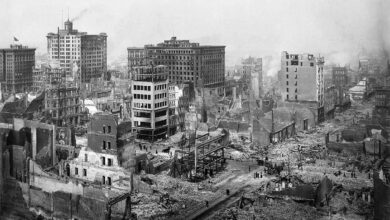Shadow Over Chernobyl: The Catastrophe Unfolds
In the early hours of April 26, 1986, the world witnessed the worst nuclear disaster in history at the Chernobyl Nuclear Power Plant in Pripyat, Ukraine, then part of the Soviet Union. The catastrophe began during a late-night safety test in the plant’s fourth reactor, leading to an explosion and fire that released massive amounts of radioactive particles into the atmosphere. The explosion occurred at 1:23 AM, immediately killing two plant workers, with dozens more succumbing to acute radiation sickness in the following weeks. The plume of radioactive debris drifted over large parts of the western Soviet Union and Europe. It even reached the eastern United States, impacting millions of lives and the environment.
The aftermath of the Chernobyl disaster was a grim testament to the potential dangers of nuclear power when not strictly regulated. The Soviet government initially tried to downplay the incident, but the scale of the disaster soon became impossible to hide. Evacuations began on April 27, with over 115,000 people relocated from the affected area. The exposed reactor core burned for ten days, releasing a catastrophic amount of radiation into the atmosphere. Efforts to contain the contamination led to the construction of a massive sarcophagus over the reactor, completed in December 1986. The disaster not only had a profound impact on the environment and public health, leading to thousands of cases of thyroid cancer, but it also instigated changes in nuclear safety standards and policies worldwide. Chernobyl remains a haunting reminder of the potential consequences of nuclear accidents, as well as a symbol of the resilience of the human spirit in the face of disaster.





